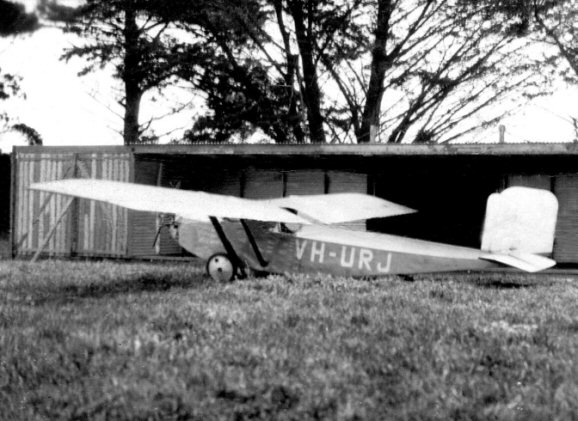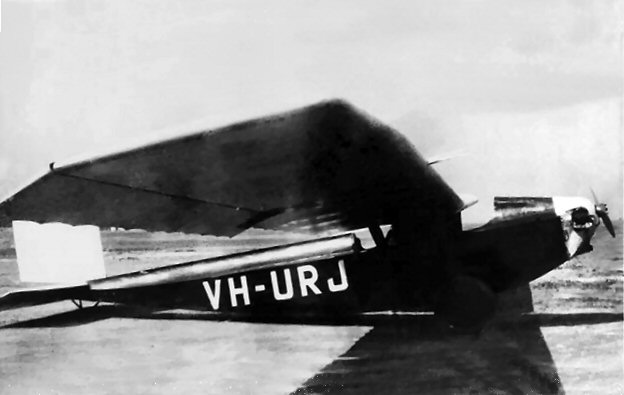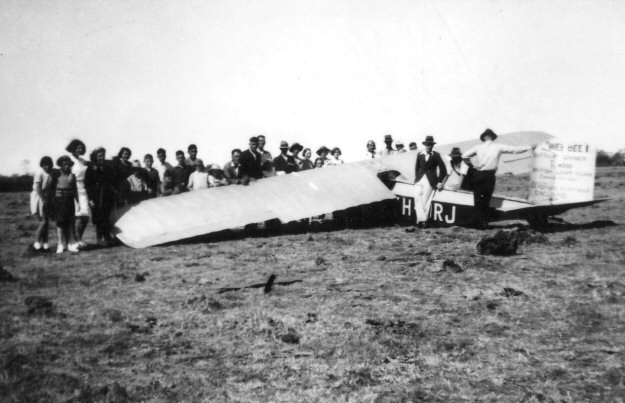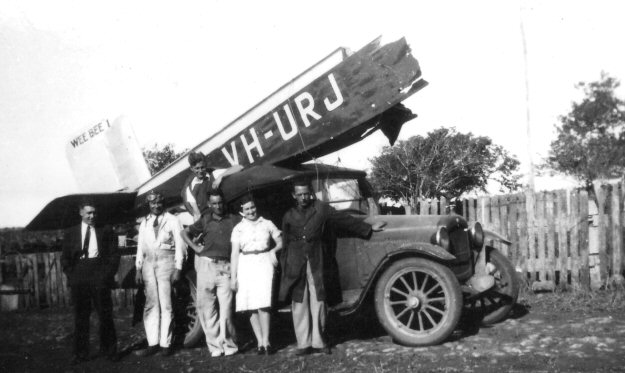VH-URJ
Beardmore WB.XXIV Wee Bee

Formerly G-EBJJ, VH-URJ was imported into Australia in
1933. The Wee Bee was designed
by W. S. Shackleton and
built in Scotland at the Dalmuir works of William Beardmore &
Co.Ltd.
It was the company's winning entrant in the 1924 Lympne light aeroplane
trials. The diminutive craft
was powered
by a Bristol Cherub 32 hp engine. Only one was built and
it was exported to Aust-
ralia in April 1933 and registered to P.T. Parkeer
of Warrnambool The photo above is from my
own
collection,
while immediately below is an image from the Len Dobbin
collection,
courtesy of
the Civil
Aviation
Historical0 Society. In 2011
I was contacted by Aaron Betts whose grandfather,
Fred Betts, acquired
the Wee Bee in October 1938.
Fred hit a rock upon landing at Pomberneit,
Victoria (where he was the
proprietor of the local service station) and broke the Wee Bee in half.
At
the foot of the page are three
shots
from Aaron's collection, the latter two showing the wreckage.
The
tail of the machine had the inscription:
"Wee Bee I"
Out-Right Winner
£ 4000
British Light Plane
Competition
Built by
Beardmore Aviation
England
Correspondent
Charles Mac Kay indicates that it appears to have existed after the war
up until about
1950, and was
owned by Vincent Boyes. It appears not to have had a current CofA
at that time, since
DCA records reflect that it was stricken from the
register in August 1940.









